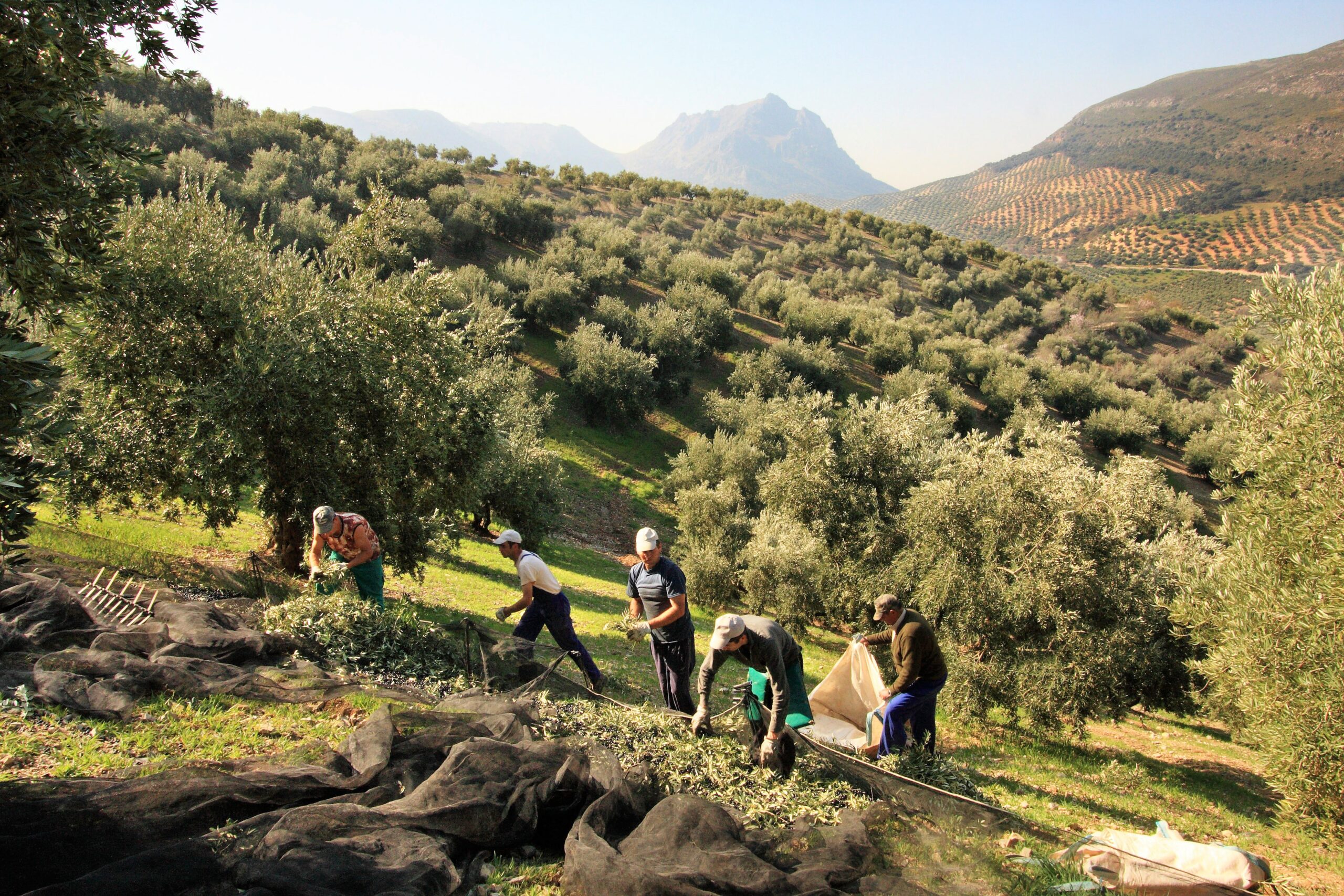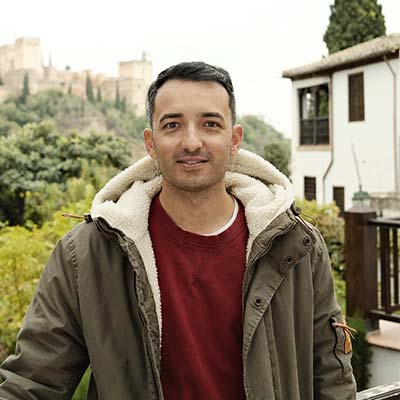For too long, travel has been a bit of a trade-off: visitors come away with great memories, but the places they visit are often left to deal with the strain of hosting them. At Andalusia Travel Tour, we believe there’s a better way, we believe in regenerative tourism.
This isn’t just about “doing no harm”. It’s about giving something back – leaving a place richer, and more resilient than we found it. In this article, we´ll explore how regenerative tourism makes that possible, and why Andalusia with its deep history, living traditions, and landscapes, is the perfect place to show the world how it can be done. Our hope? To inspire a way of travelling that benefits everyone – visitors, locals, and the land itself. Find out more about us here.
Table of Contents
What is Regenerative Tourism? A New Philosophy of Travel
Rethinking the limits of “sustainable”
We’ve been hearing about sustainable tourism for years – travel that tries to reduce its impact, that encourages us to use fewer resources, to be more mindful, to do as little harm as possible. And while all of that is important, there’s a problem: doing “less harm” isn’t the same as doing good.
In many places, simply keeping things as they are isn’t enough. Natural spaces are under pressure, small communities are feeling the weight of tourism, and traditions risk being lost. So even with the best intentions, sustainability sometimes feels like putting things on pause, rather than moving them forward.
That’s where regenerative tourism offers something different. It’s not just about protecting a place – it’s about helping it thrive. It’s about asking: how can travel actually make things better? For the people who live there, for the environment, for the culture. It’s a more active, engaged approach – and it starts by understanding that visitors can be part of the solution, not just part of the problem.
A more ambitious kind of travel
Regenerative tourism is about more than just visiting a place — it’s about being part of its renewal. At its core, it’s a holistic approach that looks at the bigger picture: the land, the people, the culture, and how they all connect.
Unlike other models of tourism, which often treat destinations as products to be consumed, regenerative travel starts from a place of respect and long-term thinking. It asks: how can this trip help restore the health of the local ecosystem? How can it support the people who live here, beyond short-term economic gain? And how can it contribute to keeping traditions alive in a meaningful way?
This kind of tourism doesn’t separate nature from community or culture — it sees them as deeply intertwined. That means working with local farmers and land stewards to heal the soil and protect biodiversity. It means creating experiences that give locals a voice and real agency, not just jobs. And it means honouring cultural practices not as performances, but as living heritage that continues to evolve.
Regenerative tourism isn’t a checklist or a label. It’s a way of thinking — one that prioritises giving back, over simply taking. And when done right, it leaves a place not just “untouched,” but stronger and more alive than before.
Key Principles: The building blocks of regeneration
At the heart of regenerative tourism are a few key ideas that guide the way it works in practice. They’re not rules, but shared values — the kind that help ensure travel brings lasting, positive change.
One of the most important is the idea of a circular economy. That means moving away from the typical take-make-dispose model, and instead designing tourism experiences that reuse, recycle, and regenerate — whether it’s sourcing food locally and seasonally, reducing waste, or supporting accommodations that run on renewable energy and give back to the land they occupy.
Another essential principle is local ownership. Regenerative tourism puts decision-making in the hands of the people who actually live there. It supports family-run businesses, cooperatives, and local guides who know the land and its stories. This not only keeps profits in the community, but also helps preserve the authenticity that makes a place unique.
And then there’s cultural preservation — not as a marketing slogan, but as a living process. Regenerative travel seeks out ways to support local languages, crafts, music, and traditions in ways that feel natural and respectful. It’s about helping cultures evolve on their own terms, without being packaged or diluted to fit tourist expectations.
In short, regenerative tourism isn’t just about where we go — it’s about how we go, and who benefits.
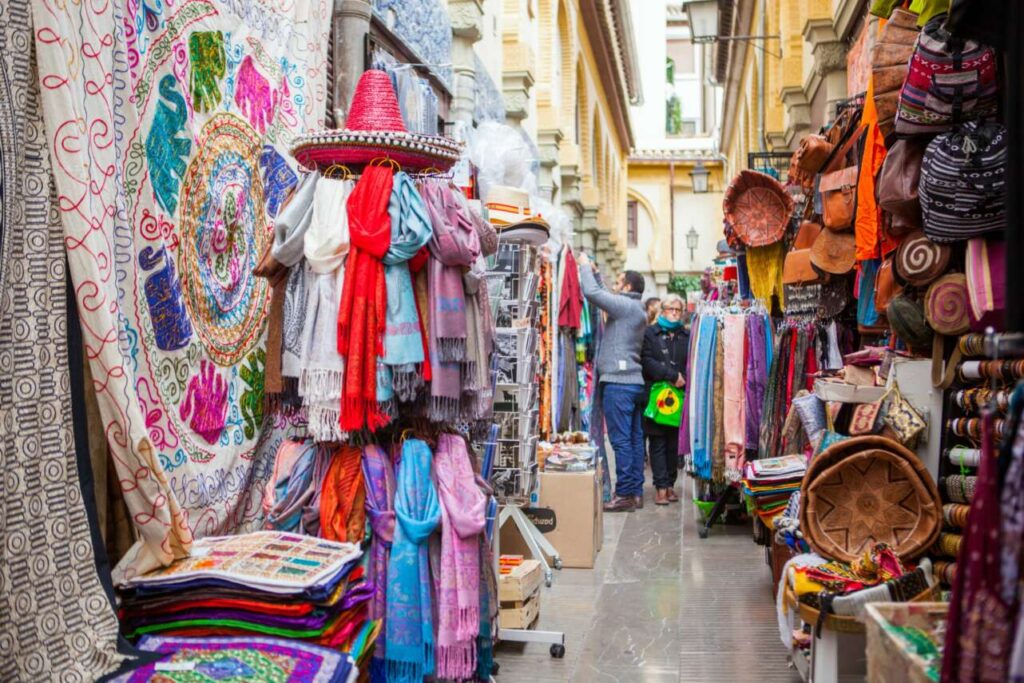
Andalusia´s Unique Context: A Living Laboratory
Diverse Landscapes
One of the things that makes Andalusia truly special is its incredible range of landscapes — all packed into one region. You can wake up at the top of the Sierra Nevada mountains and be on a sunny beach by the Costa del Sol just a couple of hours later. Between those extremes lie fertile river valleys, like the Guadalquivir, that have shaped life here for centuries. And then, almost surprisingly, you find arid desert areas that remind you just how varied this land really is.
This variety isn’t just beautiful to look at; it offers a unique chance for regenerative tourism to take root in different ways. Each landscape comes with its own challenges and opportunities, from mountain conservation to protecting coastal ecosystems, and from supporting traditional farming in the river valleys to managing fragile desert habitats.
In Andalusia, travelers can experience this mix firsthand — and be part of efforts that respect and strengthen these diverse environments.
Rich Cultural
Andalusia’s culture is as diverse as its landscapes, shaped by centuries of history that remain visible today. The Romans built roads, cities, and infrastructure that still define the region’s layout. The Moors, who ruled for nearly 800 years, introduced new architecture, agriculture, and learning, leaving treasures like the Alhambra and irrigation systems still in use. Later, the Christian reconquest blended these traditions with new customs, adding yet another layer. Together, Roman, Moorish, and Christian influences created a living culture that continues to evolve while staying rooted in its past. For regenerative tourism, this heritage is not just something to admire but something to actively experience.
Our approach to regenerative tourism in Andalusia goes beyond reducing impact — it actively creates positive change. Instead of concentrating on saturated destinations, we bring travellers to small villages away from traditional tourist routes, where they can share a homemade lunch with local families, learn traditional farming techniques, or take part in seasonal agricultural activities. These encounters generate real connections while ensuring that local communities directly benefit and are left in a stronger position than before.
Making this possible has also required dialogue with local authorities and policymakers, to present a tourism model that balances economic opportunity with cultural preservation and environmental care.
The challenge of mass tourism
Andalusia has long been one of Europe’s most popular destinations — and that’s not by accident. Its beauty, history, and culture have drawn millions of visitors year after year. But this popularity has come with a cost. Mass tourism has often meant overcrowded cities, strained resources, and communities feeling like they’re living in a tourist show rather than their own homes.
The reality is that relying so heavily on large numbers of visitors has taken a toll — on the environment, on local ways of life, and even on the authenticity that makes Andalusia special in the first place. Beaches suffer from overuse, historical sites face wear and tear, and smaller towns sometimes struggle to keep up with demand.
But here’s the good news: this challenge also opens the door for something better. It’s the perfect motivation to rethink how we travel and what we expect from our trips. Instead of simply consuming destinations, regenerative tourism invites us to become active participants in their wellbeing.
This isn’t about turning our backs on tourism — it’s about evolving it. It’s a chance to engage with local communities and reach places other tour operators overlook or ignore. By travelling differently, we can bring value to parts of Andalusia that remain authentic and untouched by mass tourism, helping preserve their character. For instance, our travellers may take part in an avocado harvest run by families who farm organically without pesticides. They sell directly to final consumers, without shops or intermediaries, preserving both local traditions and a way of life based on sustainability.
The Andalusian Adventure with a Purpose
Andalusia Travel Tour believes in more than just travel; we believe in regenerative tourism. This isn’t just about reducing our footprint; it’s about helping the local culture and communities thrive. We take you beyond the typical tourist route, connecting you with local traditions and sustainable practices. Imagine experiencing the Cordoba Fair, but also diving deeper by staying in the unique cave houses of Guadix or at a rural family-run hotel like Cortijo Las Monjas. You’ll meet the families behind organic olive oil and visit an eco-winery that uses traditional methods. Our tours also showcase pioneering projects like the sustainable avocado farms that practice water reuse (www.aguacatesecologicos.com).
We bring you to local markets like the one in Vélez Málaga, not just to see but to participate, teaching you to cook authentic dishes like gazpacho. Choosing our regenerative tours means you’re not just traveling; you’re actively helping to preserve and improve Andalusian communities.
The Pillars of Regeneration in Andalusia
Pillar 1: Enviromental Restoration and Biodiversity
Reforestation and Rewilding
Across Andalusia, local groups and communities are leading inspiring projects to plant native trees and restore natural habitats that have been lost due to centuries of agriculture, urban growth, and wildfires. These efforts are about more than just adding greenery — they aim to bring back a balance that supports wildlife, from birds to insects to larger mammals, some of which are endangered. Rewilding creates spaces where nature can flourish again, helping ecosystems become stronger and more resilient. For travelers, this opens up opportunities to connect with the land on a deeper level, whether by joining tree-planting days or supporting eco-friendly tours that fund these projects.
Sustainable Agriculture
Andalusia’s landscapes have been shaped by farming for thousands of years, and olive oil is one of its most iconic products. But the focus is shifting towards more sustainable and regenerative agriculture practices that prioritise soil health, biodiversity, and water conservation. Many small farms are now embracing organic methods, reducing chemicals and working with nature’s rhythms rather than against them. Agritourism lets visitors experience this firsthand: spending time on family-run farms, tasting fresh, locally-produced olives and oils, and learning about traditional techniques that have stood the test of time.
By supporting these farms, tourists help sustain rural communities and promote a way of farming that cares for the land’s future.
Water Management
Water is one of Andalusia’s most precious resources, and its scarcity is a constant challenge. The region has seen droughts and dry spells that affect both people and nature, making careful water management essential. Tourism can be part of the solution by encouraging responsible water use — from hotels installing efficient systems to travelers adopting simple habits like shorter showers or reusing towels. Beyond conservation, some initiatives work to restore wetlands and natural water cycles, helping landscapes retain moisture and support wildlife. Protecting water means protecting the entire ecosystem.
Pillar 2: Cultural Revitalization and Authentic Experiences
Beyond the Monument
Regenerative tourism invites travelers to go deeper than just ticking off famous landmarks. It encourages genuine engagement with the culture — connecting with local people, their stories, and daily lives. Instead of rushing through a site, visitors have the chance to learn how traditions are woven into everyday experiences, from the way communities celebrate to how they care for their land. This kind of travel creates meaningful moments that go beyond sightseeing, fostering respect and understanding that benefit both guests and hosts.
Supporting Local Artisans
Andalusia is home to a rich heritage of traditional crafts that tell the story of its people. Pottery, leatherwork, embroidery, and weaving are just a few examples of skills passed down through generations. Regenerative tourism supports these artisans by offering travelers the chance to meet them, watch their craft in action, and even try their hand at it. Buying directly from local makers not only helps keep these crafts alive but also ensures that the value stays within the community, strengthening local economies and preserving cultural identity.
Safeguarding Intangible Heritage
Some of Andalusia’s most treasured cultural expressions aren’t physical objects — they live in music, dance, festivals, and food. Flamenco, for example, is far more than a performance; it’s an emotional expression of the people’s soul. Local festivals, like the Romerías and Feria de Abril, play a crucial role in keeping community spirit alive. These gatherings are moments when tradition bursts into life — with music, dance, rituals, and shared meals that connect generations. They are not just events to watch, but experiences that invite participation and understanding, reinforcing cultural identity and social bonds. Likewise, Andalusian cuisine, prepared with local ingredients and time-honored recipes, is a living tradition. Regenerative tourism encourages travelers to engage with these traditions respectfully, helping ensure they continue to flourish and evolve naturally.
Pillar 3: Community Empowerment and Local Ownership
Fair Wages and Local Employment
At the heart of regenerative tourism is the belief that local people must be the primary beneficiaries of tourism’s economic impact. This means creating jobs that offer fair wages, good working conditions, and long-term stability — not just seasonal or low-paid roles. When communities receive fair compensation for their work, it helps reduce economic inequalities and gives residents the confidence to invest in their own future. It also encourages the preservation of local culture and traditions, as people are more motivated to stay and thrive in their hometowns.
Community-Led Initiatives
Throughout Andalusia, many towns and villages have taken ownership of their tourism future, designing experiences that reflect their unique identity and values. For example, Grazalema, nestled in the Sierra de Grazalema Natural Park, has developed eco-friendly hiking and cultural tours led by locals who share their deep knowledge of the area’s nature and traditions. Another standout is Júzcar, once known for its distinctive blue-painted houses, which transformed into a community-driven tourist destination after a global spotlight. These examples show how tourism rooted in local leadership fosters a sense of pride and ensures that profits stay within the community rather than leaking out to outside operators.
The Role of Rural Tourism
Rural tourism in Andalusia is more than a trend — it’s a powerful tool for balancing economic benefits across the region. By choosing to stay in rural guesthouses, farm stays, or small inns, visitors directly support families and local businesses in areas that often face depopulation and economic challenges. Activities like olive harvest experiences, traditional cooking classes, and guided nature walks offer authentic, hands-on ways to engage with the region’s heritage and environment. This kind of tourism helps keep villages alive, preserves rural landscapes, and encourages younger generations to stay or return, strengthening the social and economic fabric of Andalusia as a whole.
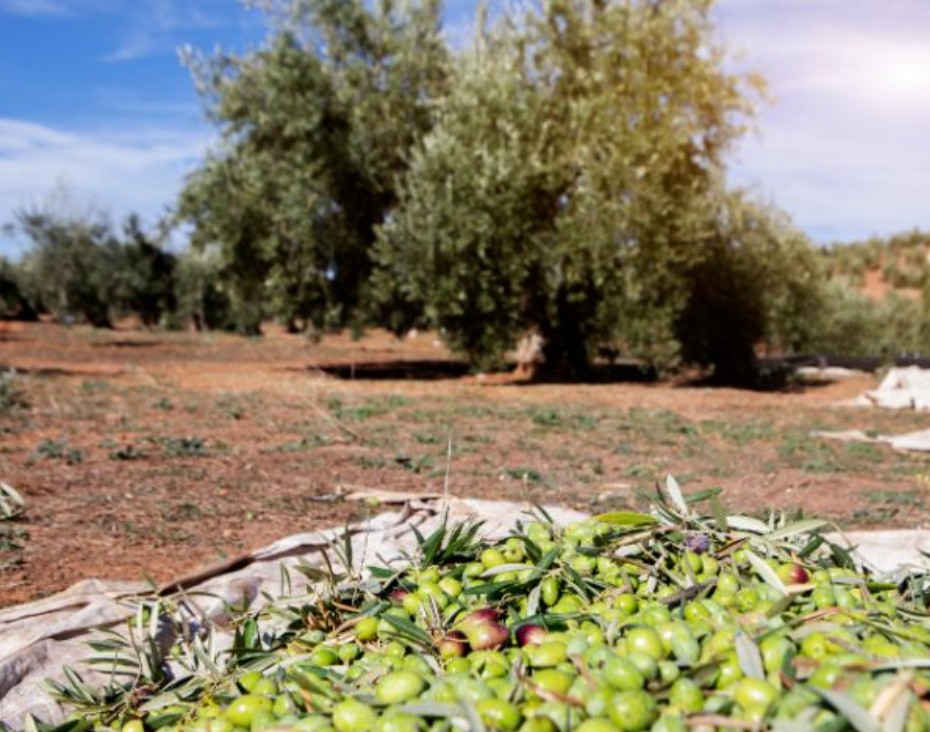
Regenerative Tourism in Action: Experiences from the Field
Experience: The Sierra Nevada
Sustainable rural lodges, guided hiking tours, and local food producers
The Sierra Nevada is more than a national park — in recent years, the region has seen a quiet but powerful shift toward a more regenerative model. Small rural lodges, often family-run, are leading the way by operating sustainably — using renewable energy, limiting water waste, and building with local, natural materials. These lodges don’t just offer a place to sleep; they help visitors connect deeply with the landscape. Guided hikes led by locals educate travelers on the region’s biodiversity and conservation efforts, while local food producers — from cheese makers to organic farmers — supply fresh, seasonal ingredients that ground the experience in place. The result is a form of tourism that benefits the environment and strengthens the rural economy.
Las Chimeneas eco-lodge
One standout example is Las Chimeneas, a small eco-lodge tucked into the hills of the Alpujarras. Entirely powered by solar energy, the lodge focuses on low-impact living and local sourcing. Nearly all of the food served comes from nearby producers or their own garden, and guests are encouraged to take part in the rhythm of village life — whether through cooking classes, guided walks with local shepherds, or simply slowing down to observe the landscape. Las Chimeneas demonstrates how tourism can be both immersive and regenerative: supporting the community, protecting the environment, and offering travelers an experience that’s rooted in meaning, not just scenery.
At the same time, our private tours provide a truly regenerative experience, allowing you to connect deeply with Andalusia’s nature, culture, and communities—while supporting their long-term wellbeing. For more details, visit our Andalusia tour packages or our private tours in Andalusia.
Experience: The White Villages of Cádiz
Local history tours, traditional cooking classes, and support for family-run businesses
Nestled among rolling hills and olive groves, the white villages of Cádiz — from Vejer de la Frontera to Zahara de la Sierra — are more than just beautiful postcard scenes. They’re living communities with rich histories, traditions, and a growing movement toward small-scale, responsible tourism. Rather than large bus groups rushing through for a photo, visitors are now slowing down: taking walking tours guided by locals, learning about the Moorish and Christian influences in the architecture, and getting hands-on in traditional cooking classes. This slower, more mindful style of travel naturally leads people to support family-run restaurants, artisan workshops, and village guesthouses — keeping money circulating within the community and creating meaningful exchange between locals and guests.
One example of this regenerative approach is a guided tour through the village of Grazalema that includes a visit to a small, family-owned cheese workshop. Here, visitors meet the makers, learn about the region’s long tradition of sheep farming, and taste cheeses made by hand using local milk and age-old techniques. Other experiences in the area include pottery workshops in Arcos de la Frontera or weaving demonstrations in Ubrique, where artisans open their doors to share not just their craft, but their personal stories. These kinds of encounters offer something no guidebook can: a chance to truly connect with the place — and to support the people who keep its culture alive.
Experience: The Costa Tropical and the Marine Ecosystem
Eco-friendly boat tours, marine protection, and beach cleanups
Along the Costa Tropical, a new kind of coastal tourism is taking shape — one that values the health of the sea as much as the views. In towns like La Herradura, operators such as Marina Playa offer eco-friendly boat tours that follow sustainable practices, avoiding sensitive areas and sharing knowledge about local marine life. At the same time, community-led beach cleanups in places like Almuñécar invite both locals and visitors to take part in preserving the coastline, turning a simple day at the beach into a small act of regeneration.
Snorkeling or diving with a conservation focus
Some local diving centres, like Buceo Aqualia, offer snorkeling tours with a purpose. Led by guides trained in marine conservation, these experiences combine underwater exploration with education — teaching visitors about seagrass meadows, native species, and the challenges facing the Mediterranean. It’s a way of discovering the sea that leaves people more informed, and more connected, than when they arrived.
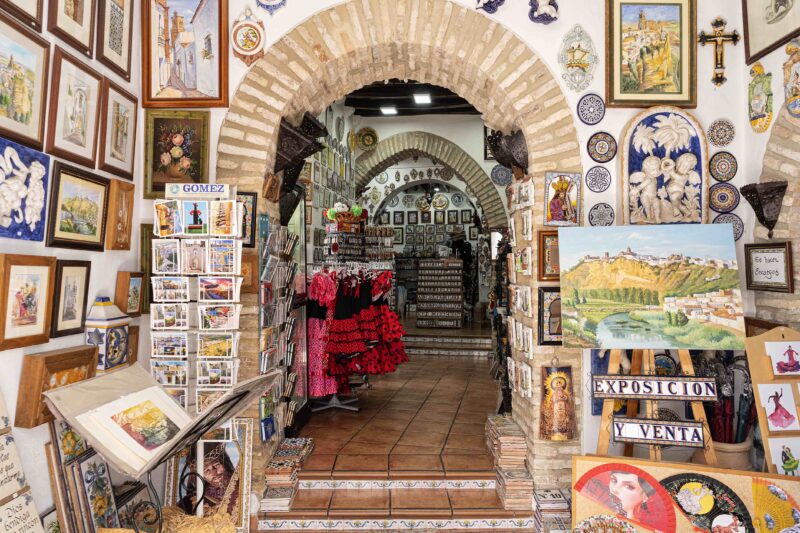
The Regenerative Traveler: Your Role in the Journey
A call to action for the tourist
Regenerative tourism starts with you. As a traveler, you’re not just a guest — you’re part of the story. Every choice you make has an impact, and that impact can be positive. You have the power to support communities, protect nature, and keep traditions alive simply by being more intentional in how you travel. It’s not about being perfect — it’s about being present, curious, and willing to give back more than you take. Regeneration isn’t a trend. It’s a mindset. And it begins the moment you decide to travel with purpose.
Practical tips
Here are a few simple but powerful ways to make your trip part of the solution:
- Book local: Choose accommodations and experiences run by locals — your money stays in the community and supports real people.
- Learn the language: Even a few words of Spanish go a long way in building trust and showing respect for local culture.
- Eat at family-run restaurants: Skip the big chains. Homemade food tells the story of a place — and supports those who live there.
- Respect local customs: Every region has its own rhythms and traditions. Observing them shows care and helps avoid unintentional harm.
- Buy from local artisans: Support crafts that carry history and meaning, while helping to preserve skills passed down through generations.
- Reduce your environmental footprint: Travel light, avoid single-use plastics, and be mindful of water and energy — small actions add up.
Ready to travel regeneratively? Explore our full range of local experiences by clicking here.

Conclusion: The Future of Andalusia is Regenerative
Andalusia shows us that tourism can be so much more than just visiting a place. By focusing on environmental restoration, cultural revitalisation, and community empowerment, regenerative tourism offers a way to travel that gives back. It protects fragile ecosystems, keeps traditions alive, and ensures that the people who call this region home benefit directly from those who come to experience its beauty.
Looking ahead, Andalusia has the potential to lead by example — not just within Spain, but globally. Its landscapes, culture, and people are already showing the world what a more conscious, connected form of tourism can look like. If more destinations follow this path, we could create a travel industry that doesn’t just sustain — but heals, uplifts, and enriches everyone involved.
Feel free to contact us to see what we offer at Andalusia Travel Tour.

